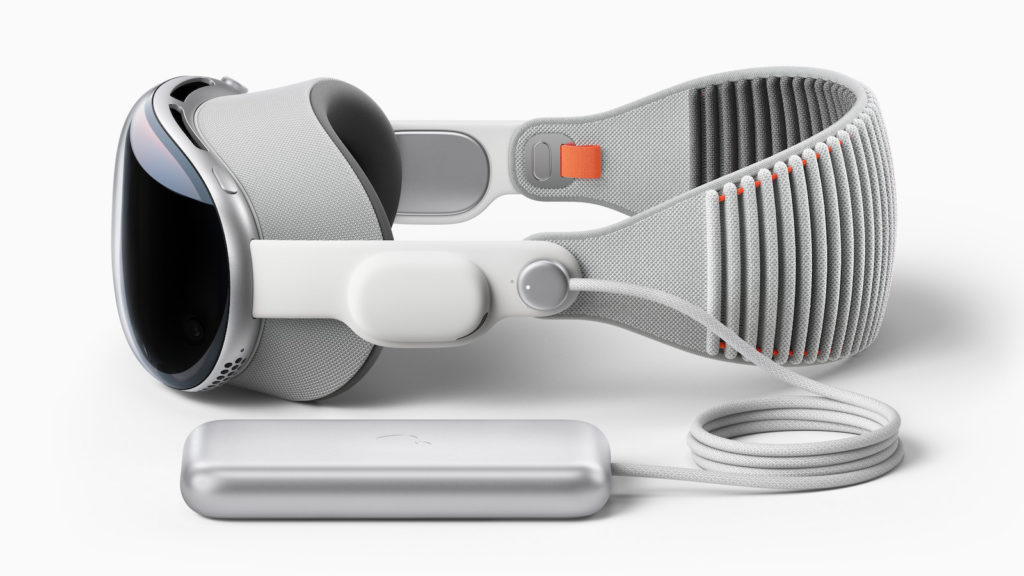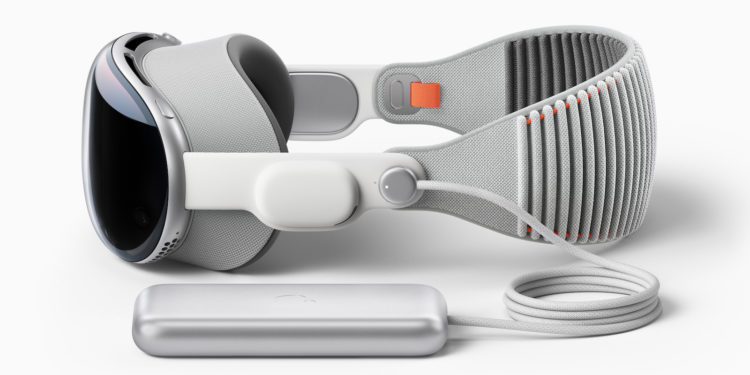The Apple Vision Pro headset has the world of technology in a frenzy with its upcoming launch in 2024. While many details are still unknown, Apple has provided a rough overview of the headset's hardware. In this article, we'll take a closer look at what's known so far about each of the Apple Vision Pro's components and specifications.
As we look forward to the launch of the Apple Vision Pro headset, it's important to take a look at what information is already known about its hardware. While we don't yet know everything about the weight, cameras, or sensors, we've put together a summary of the information available so far for anyone interested.
An insight into the hardware of the Apple Vision Pro headset
- The chassis: The Vision Pro features a three-dimensionally shaped laminated glass display attached to a sleek curved aluminum frame. A quiet thermal system has been integrated to optimize performance and minimize heat generation.
- Screens: The headset impresses with two custom-made micro-OLED displays that provide each eye with "more pixels than a 4K TV." A three-part lens creates an immersive viewing experience. There is also an external "EyeSight" display that shows other people the selected mode.
- Cameras: The Vision Pro is equipped with 12 cameras and five sensors that monitor hand gestures and map the environment. The display is fed with over a billion pixels per second to ensure a clear and crisp image. The cameras enable 3D recording and improve hand tracking in low light conditions.
- Bands: The headset's audio bands contain speakers with spatial audio support. The headband is removable and has an adjustment dial. A magnetic light shield holds the headset securely to the face and provides additional light protection.
- Buttons: The digital crown allows access to the home screen and adjustment of the immersion level. A special button is used to record spatial videos and photos.
- Cable: The headset is equipped with a single braided power cable that attaches magnetically to the left side. It can be connected to a power source or an external battery for wireless use.
- Chips: Inside the Apple Vision Pro are the powerful M2 chip and the R1 chip. The M2 chip is responsible for processing and providing the graphic content, while the R1 chip processes information from cameras, sensors and microphones. Thanks to the R1 chip, the images are transmitted to the displays with almost no delay, which enables an immersive experience.
The Future of Augmented and Virtual Reality
While we eagerly await the launch of the Apple Vision Pro headset, we've already gotten an interesting glimpse of its exciting hardware. While many questions remain unanswered, the Vision Pro promises a new era of augmented and virtual reality with its impressive displays, cutting-edge cameras, and powerful chips.

We look forward to more details and how the Vision Pro will evolve in the coming years. Please note that the information in this article is based on what is known about the Apple Vision Pro so far. It is possible that some specifications and features may change before the actual launch. Looking for new accessories? Then take a look in our Amazon Storefront – there you will find numerous products from leading providers, also for HomeKit and Co.!





